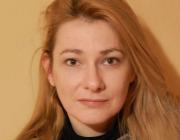Abstract:
This study presents the species composition of living coccolithophore communities in the Aegean Sea (northeastern Mediterranean), investigating their spatial and temporal variations in various environmental conditions from mesotrophic to ultra- oligotrophic regions. Coccolithophores of the photic zone in the Aegean Sea are relatively diverse (65 heterococcolithophores and 34 holococcolithophores) and dominated mostly by Emiliania huxleyi, Syracosphaera spp., Rhabdosphaeraceae and holococcolithophores. Hierarchical classification using R-mode cluster analysis distinguished five coccolithophore groups: Group Ia (Emiliania huxleyi, Syracosphaera molischii and Syracosphaera ossa) prevails in the high cell density and low diversity assemblages during the winter and early spring, when low temperatures and high nutrient concentrations are prevailing. Particularly in the north Aegean, E. huxleyi is dominating the upper photic zone being affected by the Black Sea Water inflow and the associated control on the water column stratification. Group Ib (Florisphaera profunda, Algirosphaera robusta, Syracosphaera anthos and Syracosphaera lamina) becomes important in the lower photic zone, making up the typical deep assemblages, whereas Group Ic (mainly Helicosphaera carteri and Gephyrocapsa oceanica) implies an opportunistic behavior in distinctly polluted neritic regions. Group IIa (Rhabdosphaera clavigera, Syracosphaera protrudens, Syracosphaera halldalii and numerous holococcolithophores) dominates the late spring-early autumn low cell density and high diversity assemblages, mainly in the thermally-stratified south Aegean and/or shallow, coastal environments with normal/ oligotrophic conditions, while Group IIb (Umbellosphaera tenuis and Syracosphaera pulchra) dominates the coccolithophore assemblages mainly during the early autumn in the north Aegean, thus reflecting the influence of Levantine Intermediate Water masses in the middle-lower photic zone. Our results suggest that abundance and variability in Aegean Sea coccolithophore assemblages are primarily controlled by surface water circulation and the associated water column stratification,with the sea temperature gradient affecting species composition.
Publisher's Version

